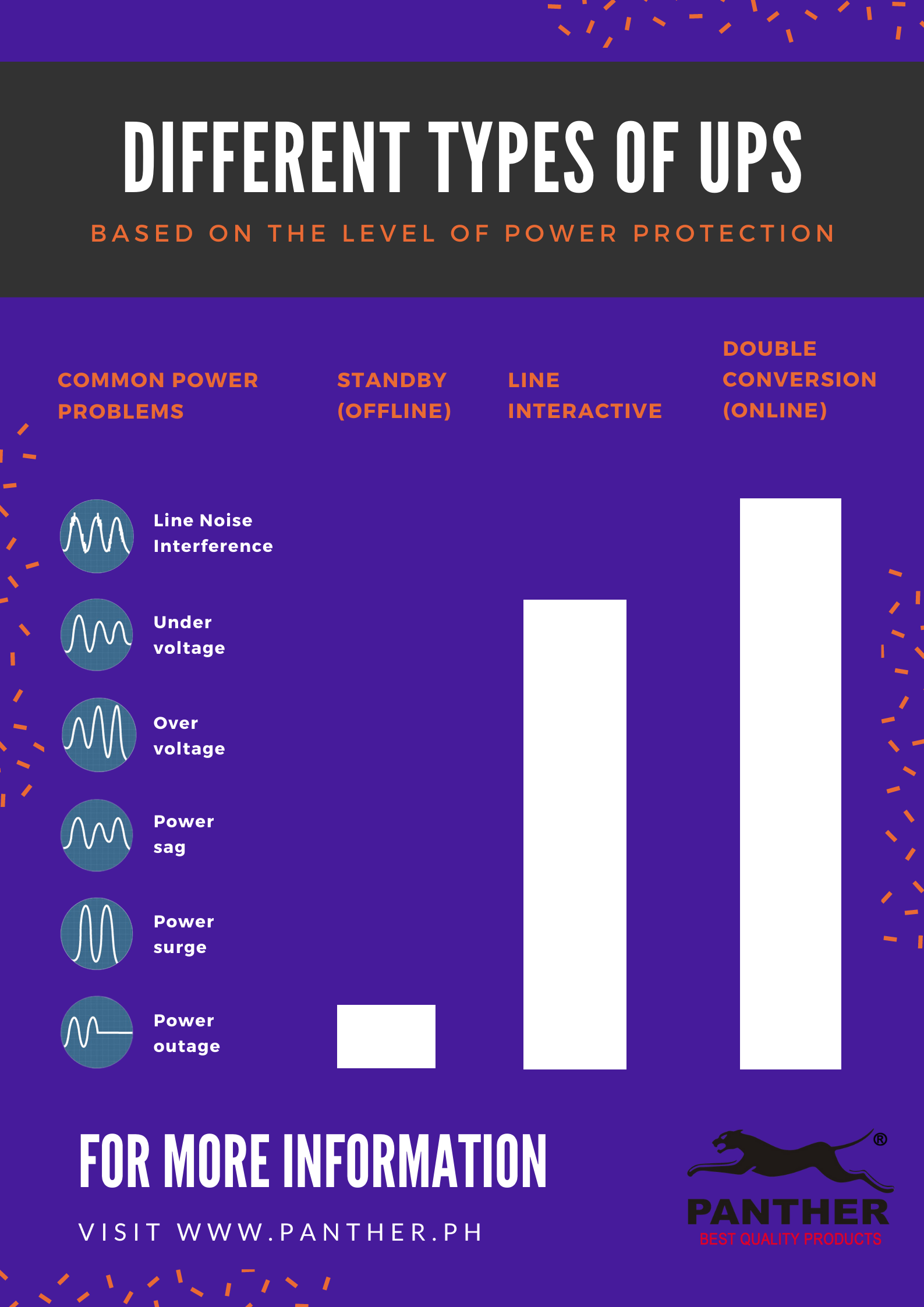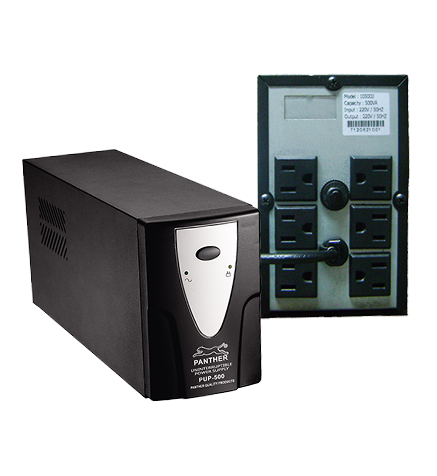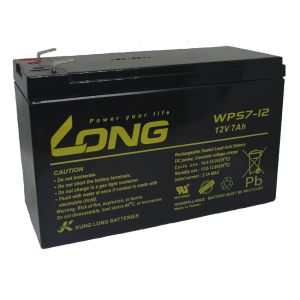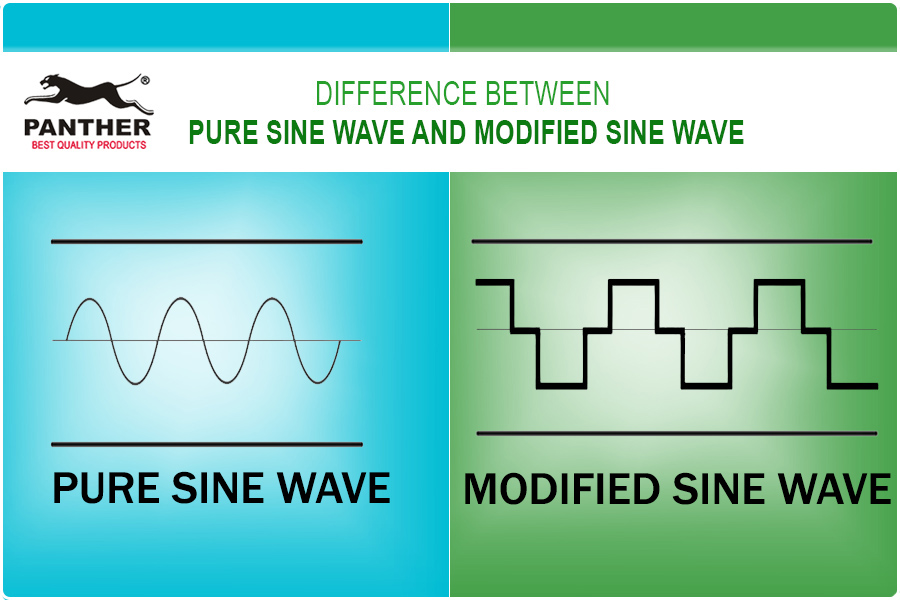
Table of Contents
Uninterruptible Power Supply has saved countless work hours and devices by allowing a connected device to continue functioning for a short period of time during a power outage. This allows the user to save data and shut down the device in the proper manner safely, thereby protecting the device from damage. But, did you know there are five different factors you need to take into account when purchasing a UPS?

Factor 1: What type of UPS do you require?
There are three types of UPS you can choose from: Standby UPS (also known as Offline UPS), Line Interactive UPS, and Double Conversion UPS (also known as Online UPS). Each of these UPS type provides varying levels of power protection to your device, and are therefore more suitable for different types of electronic equipment and device. For a detailed explanation of the differences between the three types of UPS, you can check this article out

Factor 2: How many devices will you be connecting to the UPS?
The most common devices people plug into the UPS would be their home computer and monitor. However, we often forget that we also require our networking equipment (e.g., router / modem) to remain functional in the event of a power outage; so you may want to plug these in too. Once you know how many equipment you plan to plug in, you can then determine the number of outlets you require on the UPS

Factor 3: How much power is needed for your connected devices?
Once you know which devices you plan to plug in, you can calculate how much power these devices will require. Keep in mind that if your UPS capacity is LESS THAN the total combined power load required by your devices, then it won’t be able to power up your devices during a power outage (and you’ve therefore completely defeated the purpose of having a UPS).
Step 1: Know the relevant terms
- Capacity is how much a power a UPS system can generate (measured in Watts)
- Load refers to the combined amount of power consumption required by the devices plugged in
Step 2: Identify total load requirement
To identify the load, write down all the devices to be plugged in, with their equivalent power consumption requirement of each device. The power consumption requirements of a device is typically found on the device’s specification plate itself, or on the user manual. When in doubt, you can also reach out to the supplier.
Once you have a good idea of all your device’s requirements, add them all up.
Step 3: Calculate the UPS capacity requirement
The rule of thumb is to get a UPS with a power capacity that is 25% higher than the total load required – this is to account for voltage fluctuations. Therefore, the calculation for your UPS capacity requirement is as follows:

Note: When purchasing a UPS, you may see two different units being used to indicate the UPS capacity – Watt and VA rating. The VA rating is always equal to or larger than the watt rating, where the ratio of watts to VA is called the “power factor.”
For simplicity’s sake, when purchasing a UPS – you should just look at the Watts capacity (which should be ~25% higher than the total load of the devices you plan to power, as discussed earlier)
Factor 4: How long do you want the power to last on battery (runtime)?
When picking out a UPS, it’s important to consider how you plan to use the extra battery power. For most people, ~5mins should be sufficient to save all their work and shut down connected devices in a safe manner; or enough time to switch to an alternate source of power (e.g., power inverter, generator)
However, keep in mind that the total wattage load supported will affect runtime. The smaller the wattage load connected, the longer the batteries will last, and vice versa.
Likewise, battery conditions could also affect runtime. The newer the battery, the longer the runtime. To keep the battery in good condition, make sure to do the following:
- Even when not in use, make sure to charge the UPS battery every month
- Keep in mind that the average life of a UPS battery is ~2 years. Past 2 years, we highly encourage you to replace the battery to allow the UPS to continue performing according to its intended function. If you own a Panther UPS, you can take advantage of the Panther Lifetime Service Warranty Program to have your UPS batteries replaced by professional technicians

Factor 5: What output wave form do your device require (e.g., pure sine wave, modified sine wave)?
Electricity supplied by utilities (e.g., Meralco) come in the form of a sine wave alternating current. However, when the UPS is in action, it will convert power from DC battery to AC power supply – and the output wave form can be either pure sine wave or modified sine wave
What’s the difference? In simple terms, pure sine wave closely mimics the sine wave alternating current normally supplied by the utilities, whereas modified sine waves produce “choppy” power. As such, pure sine wave is typically considered “cleaner” and suited for sensitive electronics. It also far more expensive.

To make an analogy, you can imagine using a modified sine wave as similar to running a car with octagonal wheels, versus a pure sine wave inverter where you’d be a running a car with round wheels. In the modified sine wave case, the car still works but the ride itself will be bumpy and may poorly affect the car occupants if they are particularly sensitive
Note that today, most consumer electronics work perfectly fine with modified sine wave inverters. However, particularly sensitive devices may not be compatible. When in doubt, you can check out this article which provides guidelines to determine your device requirements. However, we highly suggest you confirm with the supplier when in doubt.
Once you’ve answered these five questions, you’re good to go! In case you’re interested in purchasing a UPS, why don’t you check out the UPS series Panther has on offer below
Standard Panther UPS specifications is as follows:
- Line Interactive Design
- Built-in AVR, with allowable input range of 165V AC – 275V AC
- Output Wave Form: Modified Sine Wave
- Backup runtime: 6 – 20 mins (depending on wattage load connected and battery conditions)
- Three UPS outlets and three extension outlets (extension outlets are used purely for extension purpose only)
- Cold Start functionality (DC Power On)
- Overload and Short Circuit Protection





How do I select the preferred power on delay settings 15sec 30 sec or 3min
Good day, the Panther UPS does not have power on delay settings. We believe you are referring to the PVP: https://panther.ph/product-category/appliance-protection/voltage-protection/voltage-protector/
For PVP: to select the preferred power on delay setting, simply push the slider on the side to the right time. We hope this answers your question!
Thank you for your information. So simple that I didn’t even notice.
I like the size of the item and it appears to work just the way you explained.
Thank you
We are glad you like it! We aim to provide best quality Panther products, and continually refine them based on customer feedback. 🙂
Hi, what is the best UPS for 2 LG monitors and 2 printers connected to my desktop PC? My workstation is in an office.
Good day! We would need to know the power consumption of your monitors, printers and PC in order to provide a recommendation. Could you let us know the ampere, volts, and wattage consumption? Thank you!